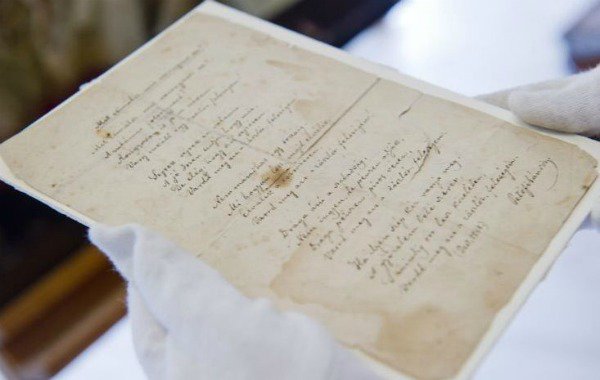Petőfi's original poems, letters, portraits, volumes, related relics and works of art, as well as a conference volume, are made available by the Petőfi Literary Museum (PIM) on the occasion of Hungarian Culture Day.
can be viewed and downloaded on the website 200 Petőfi szabadon ( https://200petofiszabadon.pim.hu
As they say, this virtual picture book is much more than a database, in addition to the downloadable images, the visitor can learn about the history of the artefacts and the interesting things related to them in an understandable way. Those interested can study Petőfi's changing handwriting in such emblematic poems as My Songs, The Crazy One, The Old Flag Bearer, In Charles the Great, in Transylvania, The Beautiful Daughter of the Szép vidék. or Nightingales and larks. They can take a look at Petőfi's correspondence with his fiancee and friends, see his school certificate, his contract for All Poems or even the record of his death. Many people may be interested in the diaries of Júlia Szendrey or the poems of her son, Zoltán Petőfi.
The library is the largest unit of the museum from the Petőfi Society, which preserves the poet's memory. It is possible to browse not only the rarities published in the poet's life - for example, all the editions of his volumes - but also a part of his own library. The interested party can search for special documents such as Petőfi's warrant or military award, poems distributed in pamphlets or posters of his itinerant acting.
However, the most spectacular are the feared pieces of the fine arts and relics collection, Petőfi's almost complete portrait gallery, from his childhood and youth to the poet in uniform. You can see illustrations of well-known works from János the Brave to My Mother's Hen by masters such as Miklós Barabás, Soma Orlai Petrich, Mór Than, Viktor Madarász, Károly Lotz, Mihály Zichy, Vilmos Aba-Novák or Béni Ferenczy.
The personal objects convey both life's journey and pastimes: you can see the poet sitting at the chessboard or smoking a pipe in a house cap, the butcher's father's market town world, and the Biedermeier furnishings and sophisticated ornaments of the reform-era Pest intellectual apartment. For the audience interested in new research results, conference volumes covering several scientific fields will be available online. "Get up and walk, Sándor Petőfi!", organized in PIM in 2019. – The conference "Memory of 1848 in different registers of culture" covered the topic of Petőfi's figure preserved in the national memory. Among the authors of the study volume presenting the written version of the lectures were literary, art and theater historians, archaeologists, historians, museologists, high school teachers and museum pedagogues.
The volume touches on such questions as, for example, what the figure of the poet looks like in the traditions of different social groups and regions, how we can reveal the history of 1848/49 in works that make the events seem glorious or tragic, how we can unravel the stories formed in the genres of high art and mass culture. The volume's studies and notes, which provide fresh bibliographic information, can be a good starting point for those who wish to find out about the directions of research and intellectual movements around Petőfi during the commemorative year.
The PIM 200 Petőfi free initiative and the conference volume can contribute to the emergence of a new image of Petőfi as digital content, accessible to anyone from anywhere.
MTI
Featured image: mult-kor.hu













